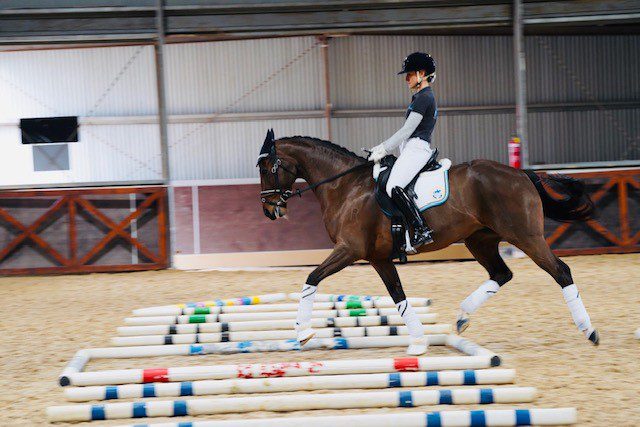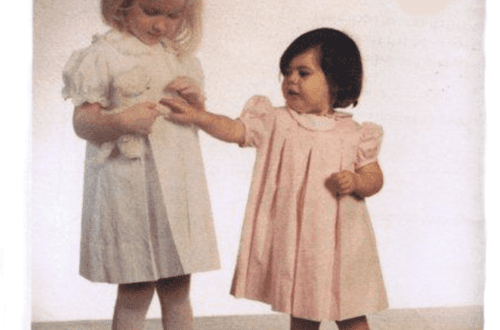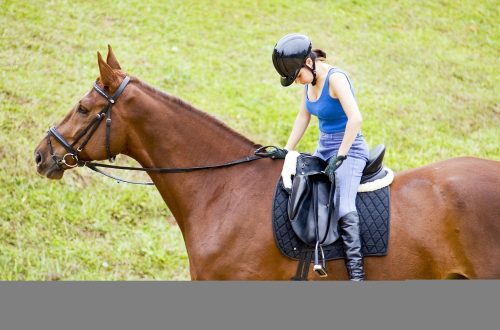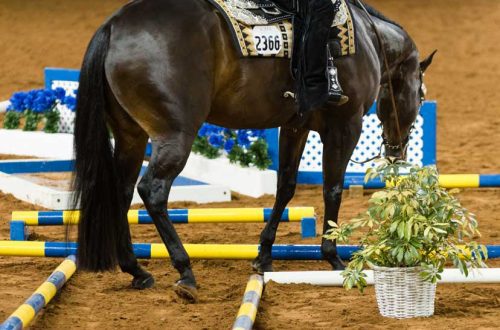
Training trot: feeling or skill?
Training trot: feeling or skill?
I was asked to write this article because for many beginners in riding, landing at the training trot becomes an almost unsolvable puzzle. Some people ride for a year or two, but still cannot feel, “catch” the very moment when the lower back begins to move after the horse, the legs relax, and the thought disappears from the head that the spine will now split into pieces and crumble into breeches.
… And now, having taught the training trot to more than one hundred beginners, I think every day: HOW to write about it? .. Write, focusing not only on your worldview, but in such a way that you can really transform words into feelings. Therefore, before moving on to the practical part, let me speculate a little.
Let’s try to answer the question: is the training trot a feeling or a skill? For example, if we compare the training landing with the drill (lightweight), we can say with confidence that the drill trot corresponds to the concept of “skill” to a greater extent than the training one. There it is enough to feel the moment of the horse’s push to start working out the same “one-two, stand-sit down”. For some, mastering the posting trot takes a couple of minutes, while for someone it can take several weeks or even months.
With training trot, the situation is somewhat different. If you do not feel the desired state immediately, it will only get more difficult. When a person rides for a long time, but still cannot sit down at the training trot relaxed and free, it is very difficult for him to explain what the riddle is. Rather, it’s easy to explain … But for some reason, topics appear on the forum again and again, called: “Problems with training trot”.
We have already come close to practice. However, some of the points described below are rather controversial. Therefore, I consider it my duty to voice a few basic “NOTs”.
When riding a training trot, the rider …
- Must NOT cling to the horse with his feet;
- Must NOT hold on to saddle or mane;
- Should NOT lean forward;
- Must NOT use the rein to maintain balance;
- Should NOT rest heavily on the stirrups;
- Should NOT slouch;
- Should NOT pinch the back, and especially the lower back.
Well, let the fear in. What can a rider do?
First of all, relax. Listen to the horse. Trying to FEEL the horse… But it’s easier said than done. So let’s move on; from theory to practice.
As soon as the task was announced to write about the training trot, the first thing I did was open my own book “Horse, rider, instructor: how to understand each other?”, which was addressed primarily to beginners. But it was not there! It turns out that only a few paragraphs are devoted to landing at a training trot … But why?
I mainly work with zero riders who have never trotted before. And, as experience shows, if you give a person the right guidelines from the very beginning, he will not have problems with a training landing. And if I set myself the task of sorting out ALL possible problems that arise at all three gaits, the book would not have 260 pages, but much more …
So, what a person needs to know before he trots for the first time?
During the first trot, the horse MUST be on the lunge or on the bit. The command “lynx!” must ONLY be submitted by the instructor. At the same time, the rider MUST NOT hold the rein in his hands, so that there is no desire to grab it and immediately stop the horse. The presence of stirrups is optional, but it is better to start acquaintance with the trot without stirrups. The task of the rider is to fully concentrate on his feelings.
That is why in the first lesson I give very insinuating recommendations for landing – so as not to load a person with information and allow you to feel the situation. Before raising the horse to the trot, I say something like this: “We sit relaxed, we tilt the body back, we pull the heel down. We try to relax the lower back as much as possible and feel the movements of the horse. We don’t fall forward: it’s uncomfortable to sit there, it throws you out of the saddle, and it’s impossible to catch the balance. ”
By the way, it is especially important to explain that it is categorically impossible to fall forward – for men. Otherwise, the first trot, especially if the smoothness of the horse’s movements leaves much to be desired, can forever discourage the desire to ride. (Maybe that’s why there are few men in the equestrian clubs? ..)
Riding at a training trot requires almost no special movements from the rider.. The task is to simply sit on the horse, as relaxed as possible, leaning back a little. If everything is correct, you do not pinch and do not fall forward, your lower back will “work” in time with the movements of the horse.
If the rider sits too tightly, the shoulders roll forward, and the legs cling to the horse, the animal cannot relax either. In this case, a person begins to flop his booty on the saddle and lose balance.
You have probably seen toys in which the head and butt are connected not by the body, but by a spring (they are often hung in a car). When riding a training trot, your lower back should perform the same function – to be a spring connecting the upper and lower parts of the body.
Again, it’s best if your first trot is on the lunge. You can leave your legs in the stirrups and stick with your hands on the saddle, but I note: don’t have to keep! At the first opportunity, you should let go of your hands. It is better not to touch the rein during the first trot.
In general, landing at a training trot is no different from landing at a walk – you just need to lean back a little more. Relax and trust the horse. This information is enough to successfully drive your first few laps.
I will designate very important point: The trainer must bring the horse into a walk BEFORE the person has his back pinched and begins to plop down on the saddle. As a rule, absolutely any rider, if he has not previously trotted, will be able to sit in a training position for five to ten steps. If the trainer sees that a clamp is about to arise, he must slow down the horse, give the person a break and then again raise the animal into a trot just a few steps. So the person will accumulate a positive landing experience, and not forced clamps and strains.
If something went wrong …
I do not pretend to be the ultimate truth, but I am convinced of one thing: if the rider has problems with the training trot, this is the fault of the trainer in the early stages of training.
It also happens that the rider, in principle, had practically no instruction (for example, he was the first to trot on a tourist horseback ride), and there was no opportunity to accumulate the right feelings …
If a man says he has already trotted, I usually follow the method described above, with the only difference being that I often make sure to remove the stirrups if the rider is already in the habit of leaning on them too much. The same with the saddle: if a person is used to constantly holding on, it sometimes makes sense to spread his arms to the sides (this can be required when the rider feels the correct fit).
If your back is too tight, the most effective way to sit down freely can be an exaggerated tilt of the body back. Roughly speaking, you need to deviate more and more and more until the lower back “earns”, absorbing the horse’s pushes.
But there is one caveat: leaning back really will only work if you hold on to something with your hands. At the moment, the horse’s mane cannot act as insurance, as it is in front of the saddle and may not give you the opportunity to tilt the body back sufficiently. Not a very good, but quite acceptable option would be the front pommel of the saddle, and the most successful solution to this problem would be a rope loop on the saddle, or a neck strap worn on the horse. Please note: if using a neck strap, it should not be tight around the horse’s neck – its length should allow you to keep your hands at the level of the withers of the horse.
So what picture do we see eventually?
1. The horse must be on the lunge. Even if you do not have any opportunity to practice with a trainer, you need to find an assistant who will take the animal on the lunge so that you can “catch” the right feeling without being distracted by the management of the horse.
2. The legs should be taken out of the stirrups and freely lowered down, without straining the calves and without clinging with the heels to the sides of the horse. It is also useful to pull the heel down, but this is not a prerequisite for this exercise.
3. Hands rest on the front pommel of the saddle or lightly hold the neck strap or loop on the pommel.
4. In the lower back, a slight, natural deflection.
5. Shoulders tilted back.
When the rider has assumed this position, the horse should (as smoothly as possible) trot.
If you start tossing up on the saddle, a clamp appears in your lower back – tilt your shoulders back even more! Are you still stuck? Then deviate further, let it seem to you that you are practically lying on the horse. In this position, even the most “dead” spins begin to work in time with the movements of the animal!
Did you manage to feel the “same” state? Have you stopped flopping on the horse and began to absorb jolts from the lower back? Then slowly, not abruptly, begin to bring the body into a more vertical position. Starts to “sausage” again? So, again deviate back until you catch the desired state.
If it is possible to choose a horse, an animal with a soft, not very amplitude trot is better to start with. Later, you can practice this exercise on harder horses until the problem disappears completely.
Pair dance
How to describe the very sensations that come to a person who has felt a training trot? Most likely, this is akin to a pair dance, where the horse is your partner. Trust him. Let him “lead” you in this dance, suggest the right rhythm and amplitude.
Turn off consciousness. Right now you do not need to think about HOW to sit and WHAT to do. Focus on your feelings. Your task is to follow a strong and confident partner in everything, to give the horse power over your body. (Let me remind you: at this time the horse is working on a lunge!)
Do not try to overtake the horse by artificially setting the range of motion with your lower back. Let your pelvis be glued to the saddle and your shoulders loosely thrown back. Between the shoulders and the pelvis, the muscles should be relaxed and mobile. Legs – hang down freely, socks are slightly raised. Hands are also relaxed.
If you have already passed the stage of harness for the saddle, as well as the stage when the hands can be completely released, take the reins at the very end and lightly clench your fists. For now, you should not pick up a rein so as not to interfere with the horse’s movement, not to pull his mouth and not to knock him out of rhythm. Only when the landing at the training trot is balanced can soft contact with the horse’s mouth be sought.
To get the feeling of a “pair dance”, it is very useful to ride bareback on a soft, calm horse with a well-pumped back. Ideally, if the animal is wearing a vaulting herd with handles. In this case, you can, holding on to the handles, perform the exercise from the previous chapter. Or maybe you don’t need it, because without a saddle it’s easier to feel how to move in unison with the horse. Just don’t trot in endless circles if your back is tight! Rise to trot, three to five paces in a relaxed, calm landing – transition to a walk … Rested? Rise into a trot again.
If it turns out to drive a few paces relaxed, we try to spread our arms to the sides and drive the same amount more. Is it possible to leave the lower back soft and move in time with the movements of the horse with an exaggerated tilt of the body back? Excellent! Now slowly, by a millimeter, align your back to a vertical position. Start shaking – back again! In no case do not try to compensate for the horse’s pushes due to muscle tension!
Important point: do not be afraid to fall! Sliding off a horse’s back at a trot is not as easy as it seems. And it is almost impossible to hurt yourself with such a fall. Put your fears out of your head and rely on your horse! Let her lead you in the dance and tell you how to move with her … (I repeat once again: you must be on a calm horse, which is controlled on the lunge by an experienced trainer or at least your partner).
Unclenching the clamps
I have hardly mentioned how the legs behave, because their role in the training trot is negligible. Here the pelvis is more important, because with it we must catch the balance and make sure that we sit exactly in the middle of the horse, without moving to the side.
What do the legs do? The most important thing is what they DON’T do. Try NOT to hook your heels on the sides of your horse! Also, do not cling to the horse with legs and even hips. The more clamps you have in your legs, the more difficult it is to relax your lower back and sit deep in the saddle.
Ideally, the landing at the training trot and canter should be such that you can spread your arms and legs to the sides, maintaining balance solely by balance. Some beginners do not believe that this is even possible … Then you have to take our word for it. If you were in the arena, you would show … However, this does not mean at all that your legs should dangle restlessly back and forth. The hips and legs hug the horse tightly; the heel ideally is on the same vertical with the pelvic bone and shoulder, slightly stretches down.
At the stage of mastering the training trot, it is permissible for the legs to dangle, like boiled pasta. When we have got rid of the clamp in the lower back, hips and legs, we will gently return the legs to their place and begin to work on ensuring that they lie calmly and motionless. To do this, it is enough to bend the leg at the knee so that the leg lies slightly behind the girth, and also pull the heels down. We gradually return the shoulders to a vertical position.
If the body begins to tighten again, it is better to hang the legs freely again and lean back more. We will always have time to sit straight, and now the main task is to develop the lower back, feel the balance and … the pleasure of interacting with the horse!
Ksenia Krotova, horse riding and hippotherapy instructor, author of the book «Horse, rider, instructor: how to understand each other?





